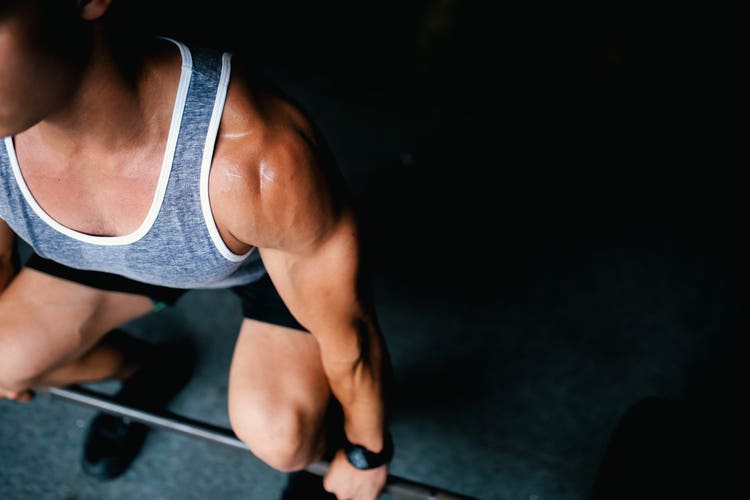12 Common Form Mistakes in Your Workout

Spare your spine, muscles and joints from added stress by avoiding these form faux pas.
Before you worry about increasing your lifting weight or raising your running pace, worry about form. Using proper form during your workout can help you get better results and, more importantly, reduce the risk of injury. Each movement has many factors contributing to correct form, but here are some of the most common form mistakes and how to fix them.
1. Squats
Mistake: Letting your knees fall out or in.
Correct: Keep your knees in line with your second toes. Though foot position may vary depending on your training goal, make sure you keep your knees tracking over your toes to reduce joint stress.
2. Deadlifts
Mistake: Hunching your back.
Correct: Hold your spine in a neutral position — keep your back flat — to minimize the risk of spinal injuries.
3. Pull-ups
Mistake: Straining your neck to reach the bar.
Correct: It’s tempting to stretch your neck or kick your legs in an attempt to clear the bar, but you won’t get the full benefits of a pull-up that way. To correctly perform the movement, start from a dead hang and use your arms, back and core to raise your body.
4. Sit-ups
Mistake: Using your neck to rise to a sitting position.
Correct: Straining your neck can cause injury and takes away from a sit-up’s intended results. To perform the move correctly, initiate the movement by keeping your eyes on the ceiling and engage your core muscles to lift your torso while gently touching — not pulling — your hands to your ears or side of your head.
5. Elliptical
Mistake: Leaning forward.
Correct: If you’re struggling to move the pedals, don’t hunch forward on the elliptical. You likely need to lower the resistance. For correct form, keep your spine neutral and shoulders back. Also, you should engage your upper body muscles to pull or push the handlebars — don’t cling to them for support.
6. Biceps curls
Mistakes: Moving your elbows.
Correct: Gym-goers will sometimes choose a curl weight that is too heavy and end up with wandering elbows — this is incorrect. For a proper biceps curl, you want to keep your elbows tucked in at your sides. Hold your elbows in place as stationary pivot points as you curl your forearms up to your chest and back down.
7. Cycling
Mistake: Incorrect seat height.
Correct: When adjusting your seat height, sit in the saddle and place one foot at the low point of a downstroke. Raise or lower the seat until your knee is only slightly bent (about 15 degrees) for the correct placement.
8. Strength machines
Mistake: Not adjusting for your height.
Correct: Always take a few seconds to properly set up a weight machine before using it. Follow the instructions — usually displayed as a sticker on the machine — to change settings to fit your unique height and build.
9. Running
Mistake: Heel striking.
Correct: Heel striking is when your heel is the first part of your foot to hit the ground in your stride. The high impact of heel striking can cause discomfort and even injury over time. Instead, you want to land on your mid-foot with your striking foot falling right below your hips.
10. Planks
Mistake: Raising your posterior.
Correct: For a perfect plank, you want your body to form a straight line from your head, neck, spine, hips and legs. If your hips rise, your body will take on a triangle shape, which detracts from the core-strengthening effects of the plank.
11. Chest press
Mistake: Bending back your wrists.
Correct: To decrease stress on your wrists, hold your wrists in a neutral position under the bar, keeping them in line with your forearms.
12. Rows
Mistake: Flaring your elbows.
Correct: For a proper row, you don’t want your elbows jutting out to the sides. Instead, tuck them close to your body so they slide past your sides with every repetition.
By following these tips, you can improve your form, reduce your risk of injuries, and get better results every time you’re in the gym.
Photo: Death to Stock